| Zeitschrift Umělec 2001/1 >> New Conservatism | Übersicht aller Ausgaben | ||||||||||||
|
|||||||||||||
New ConservatismZeitschrift Umělec 2001/101.01.2001 Jana Ševčíková a Jiří Ševčík | kunstmarkt | en cs |
|||||||||||||
|
"The logic of the reconstruction of the old system is a reconstruction based on a liberal democratic model that claims to be the only possible reality and that feels it must be depoliticized, managed by experts so that the process of achieving the ideal objective — a globalized society — will run as naturally and normally as possible and not be disturbed by excessive immaturity or any attempts at returning to the old regime.
The question of current conservatism is, for us, primarily a question of depoliticization in society and the arts. The mere utterance of the notion of political engagement evinces in us suspicion and a feeling of inappropriateness. Political engagement can be understood as a network of human relations within a real social structure and the ability to create a social community, whereas depoliticization is a mythical statement (Roland Barthes). In other words, political engagement represents a call by the excluded and expelled in society who make the call as if it were a universal call for the reconstruction of social space. Depoliticization, its opposite, is one of the elementary objectives of antidemocratic politics: It prohibits people from imagining an alternative to the current order (Slavoj Žižek). “Residual issues” from the past are influencing the current cultural environment. One such issue is the mechanism of resistance to power and ideology. The time-tested weapon of antitotalitarian resistance was the defense of “superhistorical (superideological) values in art.”1 In practice this often involved a stagnation of what were then already conservative values, mild modernism, or neorealism as Karel Teige once ironically called it. The question is to what extent these values were really at work in the society of that period. They might have been efficient at the time because they represented a path of resistance, but the essentially esthetic nature of art and the direct moral nature of politics was one of the causes of art’s total depoliticization and, in fact, the disposal of any social function for art whatsoever. The abiding effect of such mechanisms in post-communist countries is without a doubt part of the legacy of totalitarianism. The call for depoliticization after 1989 came naturally as an extreme response to politically justified interventions in art and has consequently become a part of new conservative and nationalist positions. The universal model of culture, in which we had a share in the 1960s (e.g. Kolíbal, Knížák), is again being rejected as being too fashionable, too much tied to foreign culture and disruptive to the authentic values by which society is supposed to live and with which it is supposed to build a national identity. Art is supposed to preserve its autonomy and not tie itself to “external” social and political issues, to defend itself against invasions of more universal cosmopolitan fashion. It should live according to its own values, which the world will come to admire (viz. the policies of some cultural institutions such as the National Gallery in Prague). At first sight these questions fall within the framework of common contradictions, such as globalization versus ethnic regional culture, or a multicultural liberal system versus new fundamentalisms. However some philosophers believe them to be false contradictions because, in fact, they belong inseparably to one another and they pose no alternatives. In his essay “The Post Political Denkverbot”2 the noted Slovene philosopher Slavoj Žižek analyzed the universal depoliticization of social life, which might lead from the “prohibition of thinking” to the prohibition of even an idea about an alternative to a liberal democratic globalized system. This is very familiar in a post-communist country, where the mere utterance of such an idea means to be immediately accused of being a leftist longing for the return of totalitarianism. Hence the question arises of what politics really means. Žižek interprets it as a need for all voices to be heard, including the voices of those with no fixed place in the social edifice who nevertheless present their requirements as standard and representative of the entire society. Their raised voices are the actual political conflict within a structured society. The identification of this part of society with the universal principle is, according to Žižek, an elementary gesture of politicization, and it can be found in all great events from the French Revolution onwards. The revolt in December last year by Czech TV employees and, to a certain extent, the demonstration by Fine Arts Academy students (see Umělec, Issue 6/2000) was similar in meaning. “In this precise sense, politics and democracy are synonymous: the basic aim of antidemocratic politics always and by definition is depoliticization.”3 This means bringing things back to the norm, returning to a standard situation in order to be led off to a space outside ideological disputes where experts and lawyers will resolve conflicts, thereby paralyzing any dangerous calls to change the entire social structure. Politics is coming through the backdoor anyway, either as right-wing populism or as nonstandard, wild demands for new laws, demands that once again treat power as irrational and that once again remind us of the power old ideological conflicts can carry. Debates about culture in the West often deal with the global success of conservatism, which has reversed the values of the 1960s — their revolutionary charge, their political conflicts — and appropriated popular culture as a tool. In an interview with Christian Holler,4 Lawrence Grossberg showed how neoconservatives use popular culture, how they play the “affective dimension of ideology” and call for “disciplined mobilization.” It’s disciplined and standard because no other methods exist in a decent, mature society. The privatization of life is an attendant phenomenon, contributing to the conservative tuning of society, causing the space for politics proper to disappear. According to Grossberg, depoliticization ultimately questions three main conditions for politics proper: 1. the awareness that broader contexts and structures than the private exist; 2. the fact that we have to maintain models of community, associations and alliances; 3. the fact we must retain the belief in the possibility of changing, intervening and acting. Otherwise society falls into apathy, declines into irony, the grotesque and cynicism. Or it simply escapes into stupidity. (Western critics consider films like Forest Gump to be celebrations of stupidity.) Depoliticization as a source of conservatism is a state of unconsciousness, time stopped, a stupid dream, but it is also the rejection of anything external that we ought to be confronted by. Conservatism has been an issue for some time in the Czech cultural community. There are a number of reasons for this. First of all, art has lost its function as a moral alternative to the establishment. After losing its role as opposition to the former regime, it has become a problem lingering on the margins. Society’s visions are more often realized in the technical and economic spheres. The logic of the reconstruction of the old system is a reconstruction based on a liberal democratic model that claims to be the only possible reality and that feels it must be depoliticized, managed by experts so that the process of achieving the ideal objective — a globalized society — will run as naturally and normally as possible and not be disturbed by excessive immaturity or any attempts at returning to the old regime. In this situation assuming a conservative stance is perhaps an efficient antidote to the loss of prestige that contemporary art has experienced. It uses the crisis — the inability to strongly articulate a topical position — and even lets economic strategy come into play: how to find a specific viewer and buyer, namely, the market. This is especially welcome at a time when the majority of artistic production depends on financial support from anonymous sources such as grants and on the plodding administration connected to them. Only by way of exception do conservative tendencies look for their sources in postmodernism or classical modernist art. Instead they usually turn to the 19th century and its mythology of national identity with its comprehensible academic paintings. Contemporary exhibitions are blocked or publicly denounced while the 19th century is offered up for the nostalgic reception of its unproblematic world. Naturally this position has also become institutionalized. The dramaturgy of exhibitions in top institutions, theoretical reflection on “last paintings” and the defense of the classical system of art against its disintegration are born on the 19th century “wings of glory.” Opening the exposition of Czech and French modern art in the National Gallery [in Prague] is an image of academic pseudorealism and fundamental populism: Brožík’s Jan Hus at the Council of Constance. This is the fault of the critique of modernism, with which arrived the postmodern movement. This criticism often took on the form of absolute judgement, and caused uncertainty. In the most uncertain and conservative cases, it perverted itself into the resistance of anything that questioned originality, uniqueness. It perverted itself into an unwillingness to embrace conceptual thought and “installation style.” In contrast, manual production was celebrated (manually made painting) as the discovery of pure archaic activity (“the work of pterodactyls”) and the sacred amazement at the discovery of an ostensibly original reality. These thoughts have been articulated as a program in the catalogue for the exhibition Last Painting in the Rudolfinum Gallery, in the publication Liberating Certainties: The Phenomenon of Classical Painting in the 1990s, in Knížák’s article, “Getting Rid of the Concept and Old Age Ahead” and in an article by B. Dlouhý “Reflection”.5 The timelessness and the magic of the creation of a work of art was set up as a countervalue to so-called installation habits. Also debated were calls for the integration of national traditions and baroque essence into contemporary art. The long-standing thesis on the baroque constant, which even had a revival in 1960s post-surrealist esthetics, came to a head again in the exhibition Actual Infinity at the Prague City Gallery. The exhibition represented another attempt at showing the conflictless continuity of the development of Czech art. Conservative thought incites an image of contemporary art as decadent, as the disintegration of form and its technological system. The galvanized memory of the distant 19th century and all that is pre-modernist is, however, the reverse side of the suppressed, blocked memory that refuses to face our own real modern past. The avant-garde past perverts itself into conservative positions, as it did in Milan Knížák’s above mentioned article “Getting Rid of the Concept and Old Age Ahead,” and, ultimately, in many parts of the permanent exposition at [the modern art gallery] Veletržní Palace. The creators of the exposition interestingly installed modern art within the dimensions of a bourgeois interior, something the art had to put up with at the time of its conception. Period photographs of Gertrude Stein interiors, and villas by Loos including wallpaper and other accessories, might serve as a model. This represents the creation of intimacy by retrospectively placing art into the pre-modernist space that was inserted into Veletržní Palace, a radically constructivist building. Aside from the embarrassing end of the exposition, dealing with art from the 1980s and 1990s, and Knížák’s criticism of this part of the exposition in Ateliér magazine, one of the fundamentally disputable elements is the conception and installation of the avant-garde. The image of Czech art is construed here as being confluent, with smooth developments in elegant colors, no fundamental contradictions and an emphasis on the mainstream and the neo-realism of modernism. The exposition failed to capture the tensions and antagonisms between the avant-garde and conservative modernisms as they manifested themselves before the war in divisions on the cultural front, and later, in the 1940 and 1950s, as they appeared in their guise as the “truth” of the pre-war era. As some reviewers have already stated, the absence of Karel Teige, one of the key figures of the Czech avant-garde in the pre-war and early post-war eras, cannot be dismissed with the usual argument that not everything can be exhibited. We’re stating this example not only as one of a number of controversial points in the permanent exposition but chiefly in order to probe for the reason behind neo-conservative positions. This is more than likely a need to present a popular, comprehensible view of art, one that would be acceptable as a national product (which is the above-mentioned “affective dimension of ideology”) guaranteeing the participation of both the public and the establishment. This unfortunately conceals the difficult, disruptive, yet vivid tension in Czech art. The exposition’s positive qualities include the fact that a maximum number of artists were satisfied because they have been assigned a definite place in history and the pantheon of fame. In reality however the real victor was the globalized “politics of identity,” which has enabled the enforcement of particular specificities. Surprised and amused, we have to say that we are facing art’s depoliticized and disabled image, which perfectly corresponds to the goals of global society. And we are tempted to ask whether the requirements of tolerance and the liberal co-existence of all are applied only for the sake of easily gaining the public’s favor and not losing our political partners. Nevertheless there is a flip side to depoliticization and peaceful non-conflicting coexistence in the form of militant populist politics existing outside all criticism and vehemently defending its hierarchy. Such politics must preach down critical positions as being irrational, untrue and immature, even as being conspiracies machinating a return to the pre-revolution regime (see the interview with Milan Knížák in the daily Zemské Noviny, 18 December 2000 and his columns in the weekly Reflex at the beginning of 2001). And all of this is connected to the post-totalitarian atmosphere, which lacks the previous fundamental polarity of good and evil and so the necessity of defining oneself against evil. The current so-called democratic society is missing an evil incarnate, writes Raymond Rehnicer.6 This is why it has become necessary to revitalize old intolerances, to recharge all debates with the threat of return and to disrupt democracy as a truly real fact. Or to accuse conceptual positions of catastrophically jeopardizing eternal values in classic art. In this kind of atmosphere, the young generation of Czech artists follows the model set by pre-modernist tradition — an escape into the subconscious and the dreams of Raphael — relieved that they don’t have to play a role in their own era. At the same time young artists try to join the trans-local context, try to win respect and stimulate the libido of consumers by applying a great external gloss. Both models are a handicap as long as they are employed out of misery and without any attempt at reflecting on one’s own situation. Besides this, making an effort towards the possibility of presenting one’s work, even without curators and speaking from a non-institutionalized space, is certainly positive. And though these artists are not asking more general questions, it is important that they are ridding themselves of stereotypes and intentionally deteriorating values. Their space is a space of imponderable differences, and the artists are poised on the verge of art. A superficial look reveals a similarity to the 1960s, but they are stripped of the evolutionary charge of the 1960s, because the language is evidently a borrowed one. Minimalist and conceptual products from the young generation often paradoxically contain a story, or in fact a stupid non-story, a clear suggestion that they are still able to find a short cut to reality. But that which is common to all is life in a non-historical space with the feeling of freedom with no obligations. (Oftentimes this ignores the preceding and current contexts.) At the same time they force anything threatening them out of their situational circle by applying cynical irony and a new esthetization, cynically playing with all models, positive and negative, so as not to be suspected of being naive. In a conservative atmosphere — in addition to the non-existent market and a clearly defined place in society — their resistance is based on apolitical foundations. According to an optimistic Western diagnosis, they are the first generation not to grow up under communism, the first generation that hasn’t taken up art within a political context. This diagnosis, delivered graciously from the Western center, naturally cannot be the guarantee of a critical position. Post Script: Conservatism is an illusion that all people can recognize for themselves in the eternal yet nevertheless dated paintings made as though they were going to be around forever. This is roughly what Roland Barthes says in his book Mythologies.7 It is astonishing that these who were originally action artists actually prefer an unchangeable hierarchy and that they hide behind tradition and transform that which is a process and history into permanency (and ownership). According to Barthes the transformation that represents the historical as natural, innocent and pure is a myth. Since “myth is a depoliticized statement,” mythmakers must resign themselves to doing something, moving things, and they have to escape the real issues. It is hard to decide whether this kind of escape — and the degradation of art — is a pragmatic step, a strengthening of power, or a regression, a giving in to the unsurpassable attraction of beautiful paintings and the past, or whether it is an escape out of naivety and ignorance. Translated by Vladan Šír Notes (recommended reading): 1. Piotr Piotrowski, “Künstler und Geschichte: Über die Grenzen der Polnischen Gegenwartskunst,” in: Der Riss in Raum, Positionen der Kunst seit 1945 in Deutschland, Polen, der Slowakei und Tschechien, catalogue of an exhibition at the Martin-Gropius-Bau, Berlin, 1994 – 1995, pp. 63-64 2. Slavoj Žižek, “The Post Political Denkverbot,” in After the Wall, Art and Culture in Post-communist Europe, catalogue of an exhibition at Moderna Museet, Stockholm, 1999, p. 092 3. Slavoj Žižek, ibid. 4. Fluchtweg. Versperrte Ausgänge (Ways of Escape. Jammed Exits), interview by Lawrence Grossberg with Christian Holler, Springerin, Bd. II, Heft 2, Juni-Juli 1996, p. 38 5. Last Painting, Rudolfinum Gallery 1998, texts by M. Slavická, J. Dolejš, M. Salák, K. Balcar, J. Procházka, V. Soukup, and Tilo; Liberating Certainties (Phenomenon of Classical Paintings of the 1990s), Eminent, Prague 1997, texts by P. Šimon and Z. Beran; Milan Knížák, Getting Rid of the Concept (And Old Age Ahead); Bedřich Dlouhý, Reflection, Aterliér 25-26/1999, p. 3 6. Raymond Rehnicer, Nesnesitelná jednoduchost modernosti, Mladá fronta 1999, p. 125 7. Roland Barthes, Mythen des Alltags, Suhrkamp Verlag, Frankfurt a. M. 1964, p. 147 "
01.01.2001
Empfohlene Artikel
|
|||||||||||||
|
04.02.2020 10:17
Letošní 50. ročník Art Basel přilákal celkem 93 000 návštěvníků a sběratelů z 80 zemí světa. 290 prémiových galerií představilo umělecká díla od počátku 20. století až po současnost. Hlavní sektor přehlídky, tradičně v prvním patře výstavního prostoru, představil 232 předních galerií z celého světa nabízející umění nejvyšší kvality. Veletrh ukázal vzestupný trend prodeje prostřednictvím galerií jak soukromým sbírkám, tak i institucím. Kromě hlavního veletrhu stály za návštěvu i ty přidružené: Volta, Liste a Photo Basel, k tomu doprovodné programy a výstavy v místních institucích, které kvalitou daleko přesahují hranice města tj. Kunsthalle Basel, Kunstmuseum, Tinguely muzeum nebo Fondation Beyeler.
|






















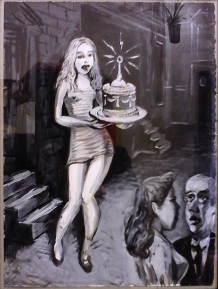




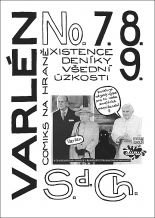
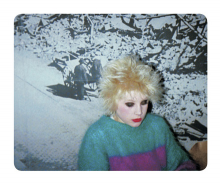
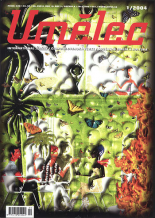
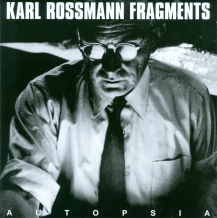


 We Are Rising National Gallery For You! Go to Kyjov by Krásná Lípa no.37.
We Are Rising National Gallery For You! Go to Kyjov by Krásná Lípa no.37.
Kommentar
Der Artikel ist bisher nicht kommentiert wordenNeuen Kommentar einfügen